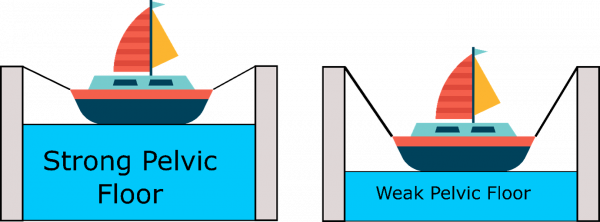Why is the Pelvic Floor so important?
The pelvic floor is a group of muscles that can become weakened but can also be strengthened.
Here are some facts about the pelvic floor that you may not be aware of:
- The pelvic floor is a group of muscles and tissue that form a hammock-like structure at the bottom of the pelvis. It supports the pelvic organs including the bladder, uterus and rectum.
- Both men and women have pelvic floor muscles, however women are more prone to pelvic floor problems due to pregnancy, childbirth and menopause.
- Pelvic floor muscles play a vital role in maintaining urinary and bowel continence.
- Weak pelvic floor muscles can lead to continence problems and can have a huge impact on one’s quality of life.
- Pelvic floor muscle training can help to improve pelvic floor control and improve quality of life in the short and long term.
- Physiotherapists can assess the strength, endurance and co-ordination of the pelvic floor muscles. In some cases, the pelvic floor can be too tight, and down-training (or relaxation of these muscles) may be of benefit.
- A large number of women perform pelvic floor exercises incorrectly and actually bear down instead of contracting and lifting when doing a pelvic floor contraction.
- The pelvic organs sit so closely in the pelvis, and problems with one area can cause problems in adjacent organs as well.

The diagram above is a simple way of explaining the pelvic organs and the pelvic floor. The boat depicts the pelvic organs (particularly the uterus, the bladder and the rectum), with the uterus being the hull and the other organs as the sails. The ropes represent the fascial (ligamentous) connections of the pelvic organs. Consider the water being the pelvic floor extending underneath the bottom of the bony female pelvis. When the pelvic floor muscles weaken, the boat can start to lower in the dock, causing the fascia (ropes) to stretch and the organs to drop down lower. When this happens, we describe it as a “Pelvic Organ Prolapse” or “POP”. There are different types of prolapse, and understanding this is the first step towards self-care and prevention. These types of prolapses are treatable and manageable, and seeking help from a Women’s Health Physiotherapist can make a significant difference to your quality of life and long-term outcomes. Patience and consistency is key when it comes to strengthening your pelvic floor.



